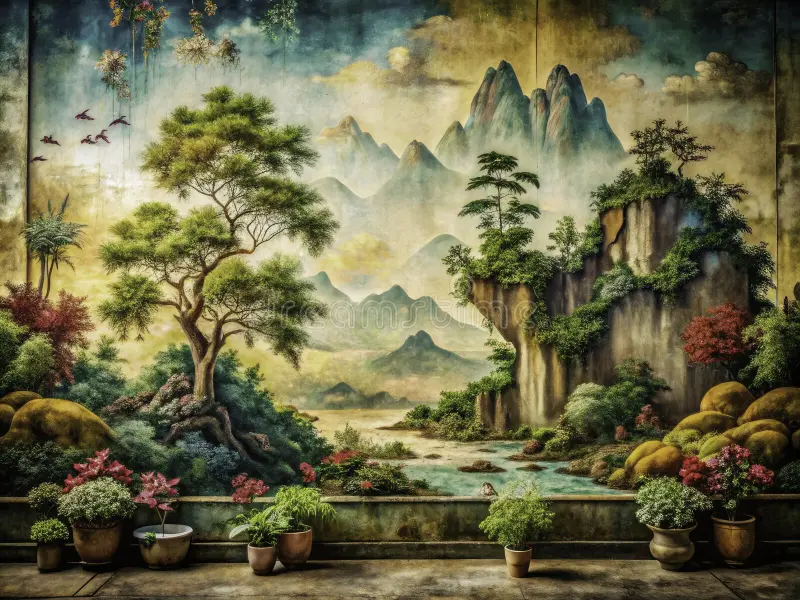
Robert Draws – The Influence of Nature on Painting has been a significant source of inspiration for countless artists throughout history. Nature’s beauty, vast landscapes, and dynamic elements have sparked creativity in painters, shaping their styles and techniques. From the early Renaissance to modern abstract works, nature has played a central role in how artists approach their craft. Many famous painters, including Van Gogh, Monet, and Turner, have drawn inspiration from the natural world to create masterpieces that capture its essence.
Nature has always been a primary subject in painting. The colors, textures, and lighting that exist in the environment offer endless possibilities for artists to explore. Landscapes, seascapes, and depictions of wildlife have all been captured on canvas, reflecting the beauty and complexities of the natural world. Artists often seek to portray nature not just for its appearance but also to convey emotions or messages.
In earlier periods, painters would often attempt to reproduce nature with great precision. For example, in the Baroque period, artists used intricate details to capture the grandeur of landscapes, focusing on light, shadow, and depth. This realism allowed viewers to experience nature through the artist’s eyes, emphasizing its power and beauty.
“Read about: Picasso’s Art and Its Influence on 20th-Century Artists”
Light plays a crucial role in nature-inspired painting. The changing quality of natural light throughout the day influences the colors and mood of a painting. For instance, the golden glow of a sunset or the soft light of dawn creates unique color palettes and shadows. Many famous landscape painters, such as J.M.W. Turner, used light to evoke feelings of warmth, melancholy, or mystery.
Impressionist painters were particularly fascinated by how light interacted with natural surroundings. Claude Monet, for example, explored the effects of light on water, trees, and flowers. His use of light and color was revolutionary, leading to the development of the Impressionist movement, which focused on capturing the fleeting moments in nature rather than precise, detailed depictions.
Throughout history, various art movements have been heavily influenced by nature. The Romantic movement, for example, celebrated nature’s power and its ability to stir deep emotions in the viewer. Romantic painters like Caspar David Friedrich often depicted nature as vast, dramatic, and even overwhelming. Their paintings communicated a sense of awe, mystery, and the sublime found in the natural world.
The Realist movement, on the other hand, aimed to present nature as it truly appeared. Artists sought to capture the everyday life of the natural world, focusing on ordinary scenes like farmers working in fields or animals in their habitats. This focus on realism allowed viewers to appreciate the simple beauty in nature and the labor involved in interacting with it.
In contrast, Abstract Expressionism took a more emotional approach to nature. Artists like Jackson Pollock used the natural world as a backdrop for expressing their inner thoughts and feelings. Nature inspired them to use vibrant colors and dynamic brushstrokes, turning landscapes into abstract forms that conveyed the artist’s emotional response to nature.
“Read more: Mixed Media Drawing: Combining Techniques for Unique Art”
The textures found in nature, from rough tree bark to the smooth surface of water, have also inspired many painting techniques. Artists often focus on replicating or interpreting these textures through their choice of brushstrokes, tools, and materials. For example, an artist might use thick impasto techniques to mimic the roughness of a mountain or create delicate, smooth layers to represent the calmness of a lake.
Nature’s organic shapes also influence the composition of paintings. The curving lines of hills, winding rivers, and spiraling tree branches can be translated into dynamic compositions that guide the viewer’s eye across the canvas. These natural forms help artists create balance and harmony within their artwork, reflecting the intrinsic order of the world around us.
In recent years, environmental issues have also influenced nature-themed artwork. Many contemporary artists are addressing the urgent need for environmental conservation through their paintings. By depicting polluted landscapes, endangered species, or climate change, these artists raise awareness about the state of the planet.
Nature’s impact on art is no longer just about aesthetic beauty. It is now intertwined with social and political themes, as artists use their work to communicate messages about the environment. These modern pieces serve as both a reflection of nature’s current state and a call to action for its preservation.
As the world continues to change, so too will the relationship between nature and painting. Digital art and technology now allow artists to explore new ways of representing nature. Virtual landscapes and digital simulations offer new mediums for capturing the beauty and complexity of the natural world.
However, despite technological advancements, the influence of nature on painting will likely remain strong. Whether using traditional brushes or digital tools, artists will continue to find inspiration in the natural world. Nature’s endless variety, beauty, and challenges will ensure that it remains a key influence on art for generations to come.